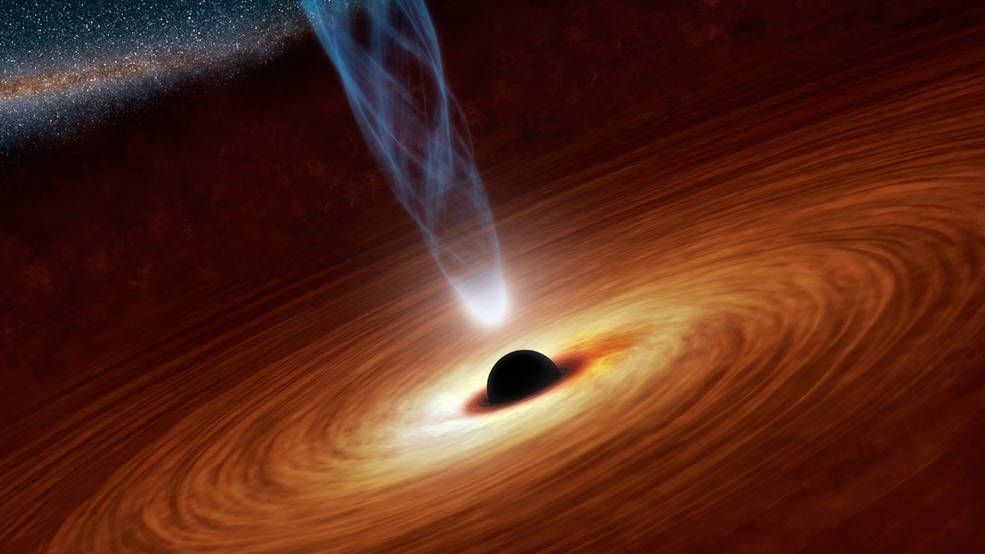BLACK HOLE-a short note
science·@avinash3900·
0.000 HBDBLACK HOLE-a short note

Black holes are among the strangest things in the universe. They are massive objects – collections of mass – with gravity so strong that nothing can escape, not even light. The most common types of black holes are the stellar-mass and supermassive black holes. A black hole is an extremely massive object which is compressed into almost zero volume, creating an infinitely dense singularity. This dense singularity has such a strong gravitational pull, that no object or particle, even light itself, cannot escape its pull if at a close enough radius.
<h1>some Famous Black Holes</h1> <ul>
<li>Cygnus X-1</li>
<li>Sagittarius A*</li>
<li>M87</li>
<li>Centaurus A</li>
</ul>
<h1>Formation of Black Holes</h1><ul>
<li>Small Stars Do Not Create Black Holes: When Smaller Stars "Die" They Become White Dwarfs</li>
<li>They are one of the possible results of a massive star's supernova.</li>
<li>This occurs due to the nuclear fusion in a star from Hydrogen to Iron</li>
<li>When the complete matter in a star is converted into iron by nuclear fusion Black Holes are formed</li>
<li>When a star is converting into a ![doBlack Holes its Gravity increases and Volume decreases</li>
</ul>
http://images.tutorvista.com/cms/images/147/life-cycle-of-a-star.png
<h1>Facts About Black Holes</h1><ul>
<li>The massive gravitational influence of a black hole distorts space and time in the near neighbourhood. The closer you get to a black hole, the slower time runs. Material that gets too close to a black hole gets sucked in and can never escape.</li>
<li>Material spirals in to a black hole through an accretion disk — a disk of gas, dust, stars and planets that fall into orbit the black hole.</li>
<li>The “point of no return” around a black hole is called the “event horizon”. This is the region where the gravity of the black hole overcomes the momentum of material spinning around it in the accretion disk. Once something cross the event horizon, it is lost to the pull of the black hole.</li>
<li>Black holes were first proposed to exist in the 18th century, but remained a mathematical curiosity until the first candidate black hole was found in 1964. It was called Cygnus X-1, an x-ray source in the constellation Cygnus.</li>
<li>Black holes do not emit radiation on their own. They are detected by the radiation given off as material is heated in the accretion disk, and also by the black hole’s gravitational effect on other nearby objects (or light passing by).</li>
</ul>
source: http://space-facts.com/black-holes/
http://minerva.union.edu/vianil/web_stuff2/what_are_black_holes.htm